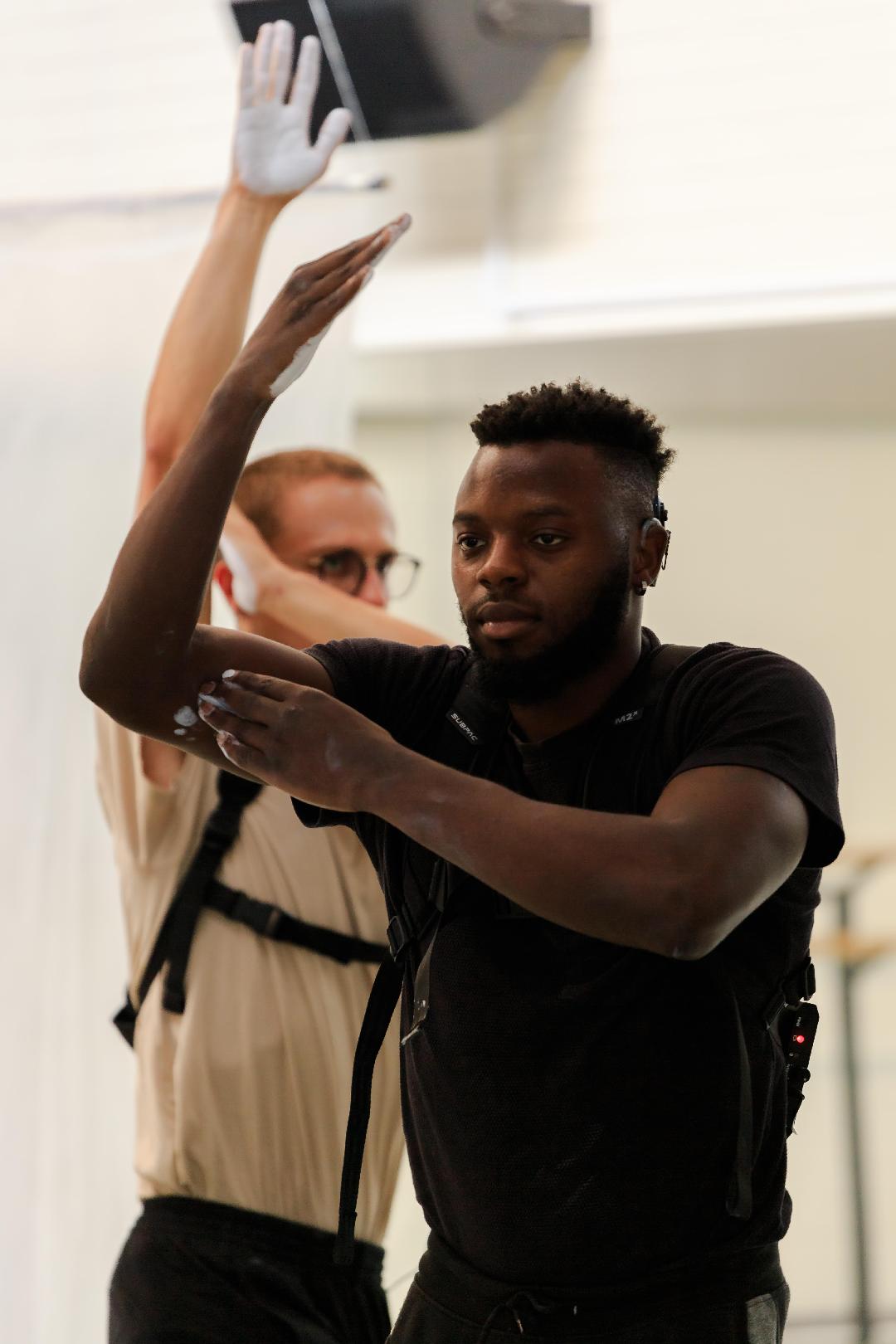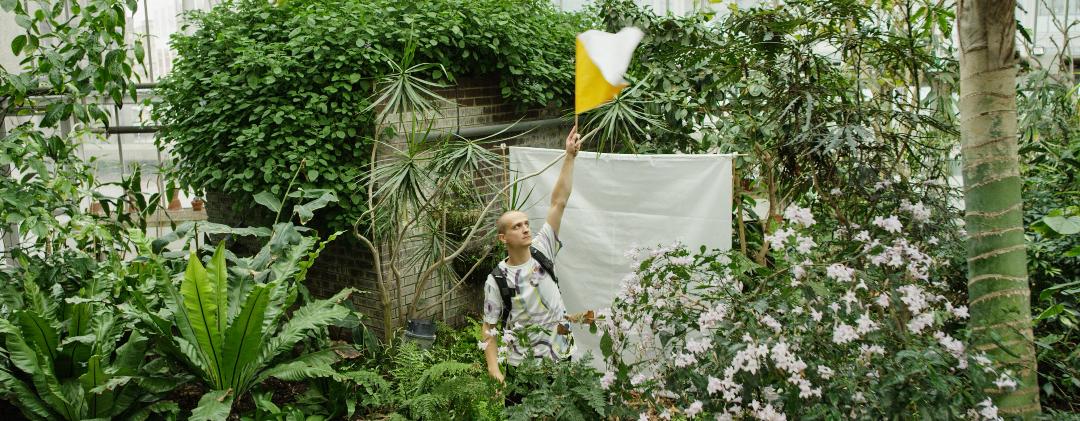Words by Katie Hagan
“I really wanted to do something that I could remember her by. I wanted to feel as if she’d helped in some way.”
Seven years ago, Nicole Vivien Watson director of Surface Area Dance Theatre experienced the traumatic process of losing a parent. When consumed by loss, however deep the wound might be, it can be comforting for us to rest in the knowledge that this person will endure in some other place or time aside from our memory. For Nicole it was the personal and artistic development that came with her MA in Japanese Studies at SOAS where she was able to be, albeit in a different space, with her mum.
Northern School graduate Nicole holds Japanese culture dear to her, falling for it when tutor John Ashford put her on the path to Yokohama in 2007 after she expressed a love for poetry and philosophy. During our phone conversation (a warmer alternative to the wilderness of Zoom, Nicole and I concur), Nicole tells me that years later in 2016, her adoration collided with her creative practice in the form of a dance project with co-producer Adam Denton and Vangeline, artistic director of New York Butoh Institute.
“I was aware from Newcastle’s local history that there had been trade connections between the north-east and Japan,” Nicole says, her gentle voice whispery. “The collaborators and I discovered that in the 19th Century, Lord Armstrong — a forefather of Newcastle upon Tyne who built the city we see today — had been commissioned by Japan’s Imperial Navy to build warships. Its shared history with Japan, in terms of colonisation and language, was something we wanted to explore in more depth.”
And so, Project Godie was born, a multi-disciplinary interpretation of this hidden history. The project’s moniker is a nod to a child named Godie who, according to Nicole’s research, died in 1873 and was the first Japanese national to be monumented in the UK. He was the son of two Japanese acrobats who were part of a troupe of entertainers that toured the north-east in the 19th Century. It was through dance that Nicole and her collaborators were able to reclaim these historical unknowns and pay homage to the people who lived lives that have been forgotten as time unfolds.
Surface Area has continued to inflect many of its contemporary works with Japanese culture. The latest endeavour is a collaboration between Nicole and co-director Paul Miller, visual artist Graham Patterson, dance artists Alex Rowland, Christopher Fonseca and Charlie Dearnley, Dance City student Laura Alise Lyden and director Bim Ajadi.

Nicole informs me that the feeling of the company’s latest work — a dance film which she tells me they are shooting during their Barbican Open Lab residency — draws on Ma ideology; a concept which sees possibility in emptiness and considers ‘the spaces in-between’ various things. The last point seems particularly pertinent given the project is a collaboration between Deaf and hearing artists, in which both utilise their unique skills and experiences to arrive at a shared space they’ll cultivate collectively.
One of the pathways to this locus is SUBPAC, a wearable technology containing a bass speaker which vibrates. “The dancers Chris, Charlie and Alex feel sound through the vibrations. For the residency and film, the composer Tom White envisaged the SUBPAC as a musical instrument that his score is composed for.”


“The feeling of these sounds has supported how we are working and moving together in unison,” continues Nicole. “We’ve also drawn on the semaphore alphabet, a signalling system based on the waving of a pair of hand-held flags in a particular pattern. Graham made these wonderful flags from Japanese paper and we are going to spell certain words using this system. We realised the SUBPAC had to be brought in for support, so that we all had the same experience when it came to sound.”
Nicole has been studying British Sign Language (BSL) for the past seven years and is working towards her Level 6 qualification to become an interpreter. “It has taken a great deal of time for me to get deep into the community’s strong cultural identity. Being able to sign has revealed another world. Working as Chris’s CSW (communication support worker) has made me totally reconsider all the parameters of communication; how and why we communicate.”
Although communication is varied, there are five parameters in BSL: handshapes, finger spelling, movement, orientation and facial expression. “Facial expression is hugely important to how we read and understand each other,” highlights Nicole. “My co-director Paul and I understand each other through our faces, and when we are with hearing colleagues, we are communicating in ways they aren’t always attuned to. My Deaf colleagues say that physical language — opening up our eyes and seeing — is something that is hugely underestimated in communication. Imagine how heightened it could be if we tuned into our sight more.”
Nicole highlights that the Deaf community can teach the hearing so much. Whilst this is very much the case, there are still many thorns and nettles littering the path to this utopic space. Inaccessibility, lack of Deaf awareness and how we understand integration come to mind.
The work doesn’t stop at shifting paradigms. A sizeable barrier is the sheer cost of learning BSL. “There needs to be grant aid for BSL courses,” pinpoints Nicole. “It needs to be more viable. Making BSL classes mandatory at school would be a good step.”
The dance industry should also take heed, as Nicole explains. “I’ve had experiences where an interpreter in the room has been a luxury. The interpreter is someone who is allocated for an hour, but what if we made them intrinsic to the process?”
Ideally this should be standard even on under-resourced projects. Providing an integrated, open space for hearing and Deaf collaborators is a priority for Surface Area. “Chris, Paul and I have discussed that once we reach a stage where we have interpreters in the room and CSWs, once we have made the reasonable adjustments, we want to start using something called trading zones.” Nicole and I chuckle at the use of this commercial, I daresay Forex-y term in a creative context. “But I like it!” Nicole assures me. “It means we can trade equitably; we understand the value of each other’s knowledge because we are on equal footing. It provides an equanimous structure for us to open our minds.”
I am persuaded. Nicole reclaimed a forgotten period of north-eastern history and identified solid connections between two seemingly disparate cultures. Who knows where she and Surface Area will take trading zones? Is there a hidden link with something else? I reckon so.
When I ask what’s next for Surface Area, I can hear Nicole smiling. “This July, Chris is going to be leading a week-long community project with volunteers at Dance City called ‘Signed, Sealed, Delivered, I’m Yours’,” she explains. “We were thinking about Stevie as an icon and decided to use the spirit of his sounds and the colour of his shows on a community project. We can’t wait to see what happens.”
About Surface Area Dance Theatre:
Founded in 2007, we are an established interdisciplinary community interest company based at Dance City, the North East’s leading development organisation for dance in the UK. We work to promote equality and diversity in all that we do; in recognition of this commitment, our company has advanced to become a registered Level 2 Disability Confident Committed Employer and is currently working towards achieving Disability Leadership in the arts.
Directed by founder Nicole Vivien Watson and Paul Miller who recognise their moral and social responsibilities, by aiming to promote equality and diversity in all aspects of company activity.
